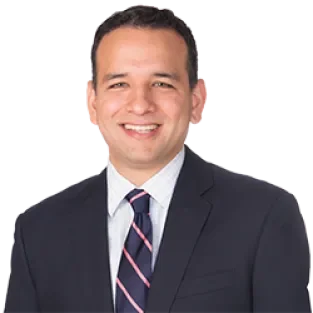ASAP
New York Legislation Provides New Leave Time for Employees Subject to COVID-19 Quarantine, Effective Immediately
NOTE: Because the COVID-19 situation is dynamic, with new governmental measures each day, employers should consult with counsel for the latest developments and updated guidance on this topic.
New York State adopted new legislation on March 18, 2020, in response to the spread of the coronavirus (COVID-19) across New York. The legislation provides employees, who are subject to a COVID-19 mandatory or precautionary quarantine or isolation order, with immediate paid or unpaid time off specific to the current crisis.
NYS Sick Leave Specifically Applicable During a Mandatory or Precautionary Quarantine or Isolation Order Due to COVID-19
Amount of COVID-19-Specific Sick Time Available
Effective upon the law’s passage, employees subject to an order of mandatory or precautionary quarantine or isolation in New York State must be provided sick leave based on the size and/or net income of their employer:
Employer Size | Leave Entitlement | Other Available Benefits |
10 or fewer employees and a net income of less than or equal to $1 million | Unpaid job protection for the duration of a mandatory or precautionary order of quarantine or isolation | NY Paid Family Leave and disability benefits for the entire period |
10 or fewer employees and a net income greater than $1 million Or Employers with 11 to 99 employees irrespective of net income |
At least 5 days of paid sick leave (with the rest unpaid) and job protection for the duration of a mandatory or precautionary order of quarantine or isolation | NY Paid Family Leave and disability benefits for the period after the 5 days of paid sick leave |
Employers with 100 or more employees irrespective of income Or All public employers (regardless of number of employees) |
At least 14 days of paid sick leave (with the rest unpaid) and job protection for the duration of a mandatory or precautionary order of quarantine or isolation | Silent |
Employers must provide this leave without loss of any other accrued sick leave (e.g., New York City Earned Sick and Safe Time Act leave).
The law defines “mandatory or precautionary order of quarantine or isolation” as one issued by the “state of New York, the department of health, local board of health, or any government entity duly authorized to issue such order due to COVID-19.” Though this definition presents as vague, the most reliable guidance to date comes from the New York State Department of Health (NYSDOH). The NYSDOH elaborated on the medical statuses that should be associated with mandatory and precautionary quarantine and isolation orders in its 2019 Novel Coronavirus (COVID-19) Interim Containment Guidance: Precautionary Quarantine, Mandatory Quarantine and Mandatory Isolation Application to All Local Health Departments (“Guidance”).
The Guidance appears to confirm that only those employees who have been subject to an order of mandatory or precautionary order of quarantine because they have been exposed to COVID-19 in some fashion, or traveled to a high-risk area, will be allowed leave under the law. Any future regulations implemented, however, could clarify this definition.
Exceptions to the Law
The law includes several exceptions. Employees are not eligible for paid sick leave due to a COVID-19 mandatory or precautionary quarantine or isolation order if: (1) they returned from traveling to a country for which the Centers for Disease Control and Prevention has issued a level two or level three travel health notice; (2) that travel was not taken part of the employee’s employment or at the direction of the employer; and (3) the employee was provided notice of the travel health notice and notice of the limitations contained in the new law prior to travel. This exception does not affect an employee’s right to take accrued leave provided by their employer, or unpaid leave for the duration of the order of mandatory or precautionary quarantine or isolation.
In addition, the law does not apply at all if an employee: (1) is physically able to work while under a mandatory or precautionary quarantine or isolation order, through “remote access or similar means;” and (2) either is deemed asymptomatic, or has not yet been diagnosed with any medical condition. If those conditions are met, the employee is not entitled to any additional paid or unpaid leave.
Retaliation Provisions
Employers are explicitly prohibited from discriminating or retaliating against employees for taking leave under this law.
Additional Benefits Available
The law also makes available additional benefits under the workers’ compensation law to affected employees. The law amends the New York Workers’ Compensation Law to further define “disability” as an inability of the employee to perform their job duties or any other duties offered by their employer due to a mandatory or precautionary order of quarantine or isolation due to COVID-19. This amendment also enables eligible employees – who have exhausted all available paid sick leave under this law – the ability to file for disability benefits without any waiting period.
The law further allows eligible employees to file for New York State paid family leave benefits, which under the new law now also covers: (a) any leave taken by an employee from work when the employee is subject to a mandatory or precautionary quarantine or isolation order; or (b) leave taken to provide care for a minor dependent child of the employee who is subject to a mandatory or precautionary quarantine or isolation order.
Disability benefits and family leave benefits may run concurrently with unpaid sick leave under the new law, but an employee may not collect benefits that would exceed $840.70 in paid family leave and $2,043.92 in disability benefits per week.
Interaction with Federal Law
Also on March 18, 2020, President Trump signed the Families First Coronavirus Response Act, which provides paid sick leave and emergency family and medical leave.
This new federal law requires private employers with fewer than 500 employees, and covered public employers, to provide paid sick time to an employee who is unable to work (or telework) because:
- the employee is subject to a federal, state, or local quarantine or isolation order related to COVID-19;
- the employee has been advised by a health care provider to self-quarantine because of COVID-19;
- the employee is experiencing symptoms of COVID-19 and is seeking a medical diagnosis;
- the employee is caring for an individual subject to a quarantine or isolation order or advised to self-quarantine by a health care provider;
- the employee is caring for a child whose school or place of care is closed, or child care provider is unavailable, due to COVID-19 precautions; or
- the employee is experiencing substantially similar conditions as specified by the Secretary of Health and Human Services, in consultation with the Secretaries of Labor and Treasury.
The New York law addresses what would happen if the federal government also passed a COVID-19 sick leave/benefits law. It provides that should the federal government do so, the provisions of New York law would be unavailable, unless the state law provides sick leave and/or employee benefits in excess of the benefits provided by the federal government. In the latter case, an employee shall be able to claim additional sick leave and/or employee benefits pursuant to the provisions of the New York law in the amount that is the difference between the benefits provided by the state law and by any federal law or regulation.
Given that the federal law does not cover employers with 500 or more employees, New York law will automatically apply to those employers. It is unclear at this time, however, if the federal law will preempt the state law for employers with less than 500 employees (even though the federal law explicitly states that it does not intend to diminish rights under other federal, state, or local law). The more conservative approach for employers operating in New York with more than 500 employees would be to provide at least 14 days of paid sick leave and guaranteed job protection for the duration of a quarantine or isolation order due to COVID-19, if possible, unless a court, regulations, or guidance signals otherwise.



